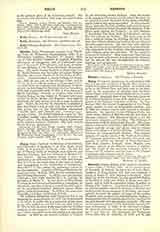

Kemble, JOHN, VENERABLE, martyr, b. at Rhydicar Farm, St. Weonard’s, Herefordshire, 1599; d. at Widemarsh Common, Hereford, August 22, 1679; son of John Kemble, formerly of Kemble, Wiltshire, afterwards of Llangarren, and of Urchinfield (now part of the parish of Hardwicke), and Anne, daughter of John Morgan, of The Waen, Skenfrith, Monmouth-shire. His uncle, George Kemble, of Pembridge Castle, Welsh Newton, was the father of Captain Richard Kemble, who saved Charles II at the battle of Worcester. Ordained priest at Douai College, 23 Febru-ary, 1625, he was sent on the mission June 4, and in his old age lived with his nephew at Pembridge Castle. Arrested there by Captain John Scudamore of Kent-church, he was lodged in Hereford Gaol in November, 1678, and condemned under 27 Eliz. c. 2 at the end of March following. Ordered to London with Father Charles Baker, he was lodged in Newgate and inter-viewed by Oates, Bedloe, and Dugdale. Sent back to Hereford, the aged priest spent three more months in gaol. Before leaving for his execution he smoked a pipe and drank a cup of sack with the undersheriff, this giving rise to the Herefordshire expressions “Kemble pipe”, and “Kemble cup”, meaning a parting pipe or cup. Sir John Hawkins in a note to `The Compleat Angler” turns Kemble into a Protestant in Mary’s reign. One of the martyr’s hands is preserved at St. Francis Xavier’s, Hereford. His body rests in Welsh Newton churchyard.
JOHN B. WAINEWRIGHT

